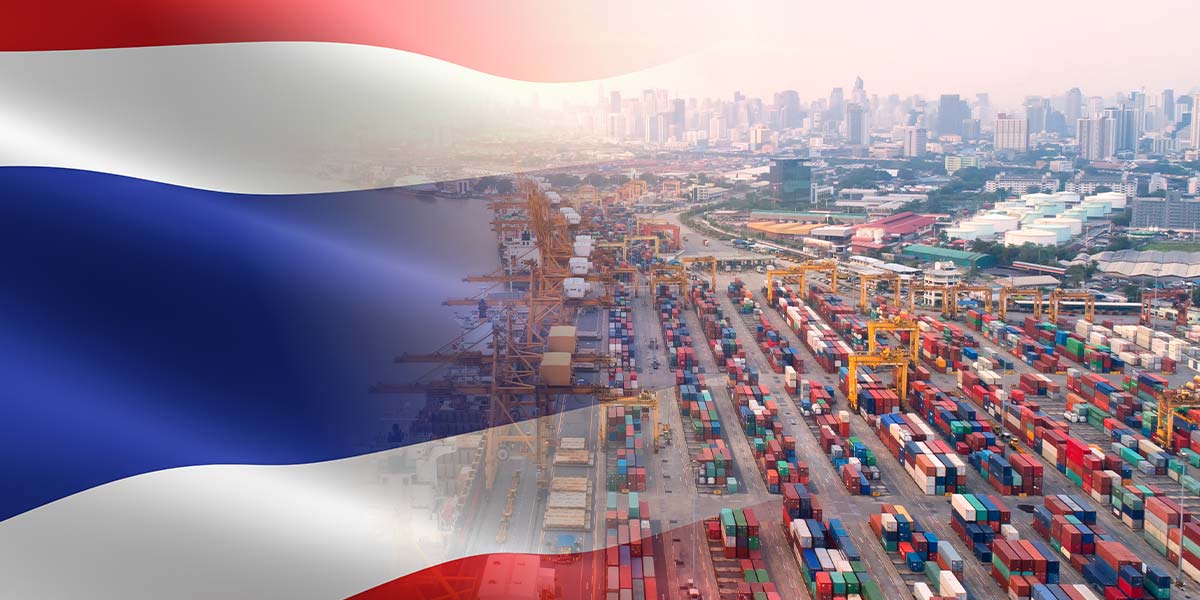Thailand’s exports in January 2025 reached a value of USD 25,277.0 million (862,367 million baht), marking a continuous growth for the seventh consecutive month at a rate of 13.6 percent. Thai exports of real sector (excluding gold, oil-related products, and weaponry) increased by 11.4 percent. This growth was supported by continued expansion of trading partner economies, inflation returning to target levels, and increased manufacturing activity.
These factors align with the International Monetary Fund (IMF) forecast, which estimates that the global economy will grow by 3.3 percent, reflecting rising confidence in both the manufacturing and consumer sectors. Additionally, exports to major trading partners such as the US and China showed strong growth, benefiting Thailand’s exports of capital goods and raw materials. However, uncertainty remains due to potential shifts in US trade policies, which could put pressure on international trade.
Thai exports in January 2025 increased by 13.6 percent to USD 25,277.0 million, while imports increased by 7.9 percent to USD 27,157.2 million, resulting in a trade deficit of USD 1,880.2 million.
Export Products
Thai exports of agricultural and agro-industrial products grew by 0.14 percent (YoY). Agro-industrial products expanded by 3.0 percent, while agricultural products contracted by 2.2 percent. Key products showing growth included rubber (+45.5%), fresh, chilled, frozen, and processed chicken (+12.3%), canned and processed seafood (+11.8%), pet food (+13.0%), wheat products and other prepared foods (+19.5%), and canned and processed fruits (+13.4%). Conversely, exports of some products declined, including rice (-32.4%), fresh, chilled, frozen, and dried fruits (-11.0%), tapioca products (-7.9%), beverages (-16.0%), and canned and processed vegetables (-13.3%).
Thai exports of industrial products grew by 17.0 percent (YoY). Key products showing growth included computers, equipment, and parts (+45.0%), gems and jewelry (excluding gold) (+148.8%), rubber products (+19.9%), machinery and mechanical components (+28.1%), and air conditioners and components (+33.2%). Conversely, exports of some products declined, including automobiles, equipment, and parts (-16.5%), iron, steel, and products (-18.6%), telephones, equipment, and parts (-16.8%), cosmetics, soaps, and skincare products (-18.3%), and semiconductors, transistors, and diodes (-38.2%).
Export Markets
- Exports to primary markets increased by 11.2 percent. The markets that saw growth included the US (+22.4%), China (+13.2%), Japan (+1.9%), the EU (27) (+13.8%), ASEAN (5) (+4.8%), and CLMV (+5.2%).
- Exports to secondary markets increased by 10.3 percent. Growth was recorded in South Asia (+111.5%), Africa (+13.9%), Latin America (+21.6%), and the UK (+9.8%), but declined in Australia (-26.9%), the Middle East (-2.1%), Russia and CIS (-5.7%).
- Exports to other markets increased by 472.8 percent.
Export Prospects
Regarding the export outlook of 2025, the Ministry of Commerce expects that Thailand’s exports will grow by 2-3 percent for the year. This growth is supported by several factors, including the expected expansion of the global economy, driven by manufacturing sector growth, the easing of conflicts in Ukraine and the Middle East, and the rise in global food prices, which reflects increased demand for agricultural and food products.
Additionally, there is an opportunity for increased exports to the US, as it seeks to replace imports from China. However, several challenges remain and must be closely monitored, such as ongoing global trade tensions, the risk of a new inflation crisis in the US, and the impact of Russia’s oil export restrictions, which could affect energy prices and shipping costs.
Further concerns include trade policy measures, such as US tariff hikes and the surge of Chinese goods into global markets. In response to these uncertainties, Thailand must maintain trade balance, diversify market risks, and implement appropriate measures to mitigate potential impacts while also seeking opportunities to maximize benefits from the challenging situation.





